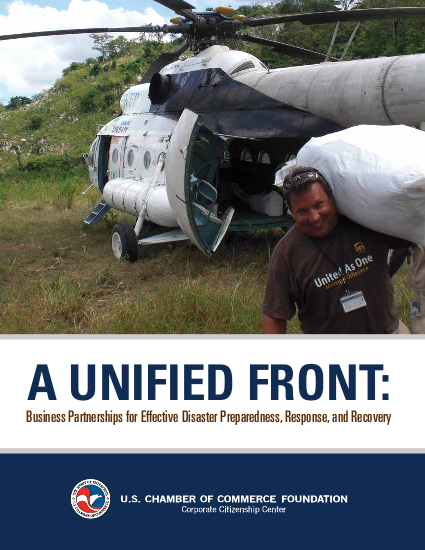
This report makes the case that a unified effort of business partnership is needed to effectively manage the unexpected difficulties that arise as a result of disasters. It presents some strategies and best practices companies have implemented for dealing with disasters and reducing their impact. It also discusses a number of trends that are critical to reducing the impact of disasters.
These trends include: employee safety and security; non-traditional disaster management (such as the Ebola outbreak); mobile technology solutions; data analytics for crisis mitigation; and strategies for multi-sector partnerships.
Companies are often in a unique position to help during all phases of disasters, as they have reach into communities that other partners, like governments and nonprofits, do not have. Whether it is working with their employees (who could number in the hundreds of thousands) on preparedness, helping prepare their supply chain of small businesses, working with local community organizations, or getting back up and running quickly to service the market, companies are an integral part of the disaster relief process.